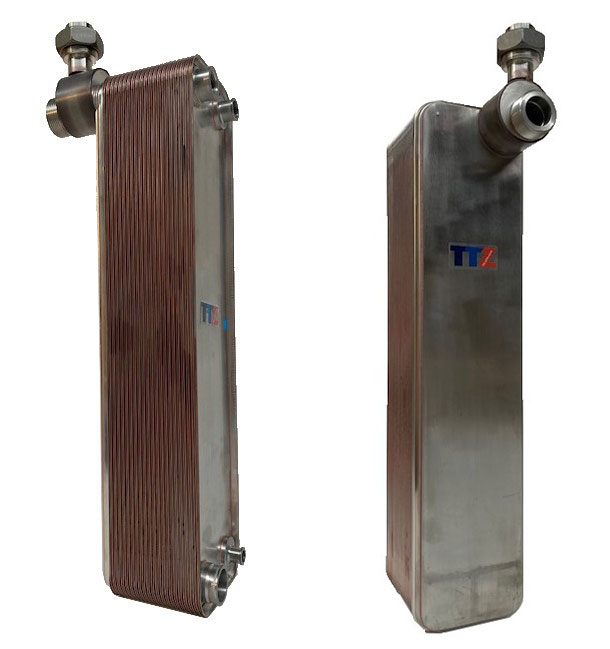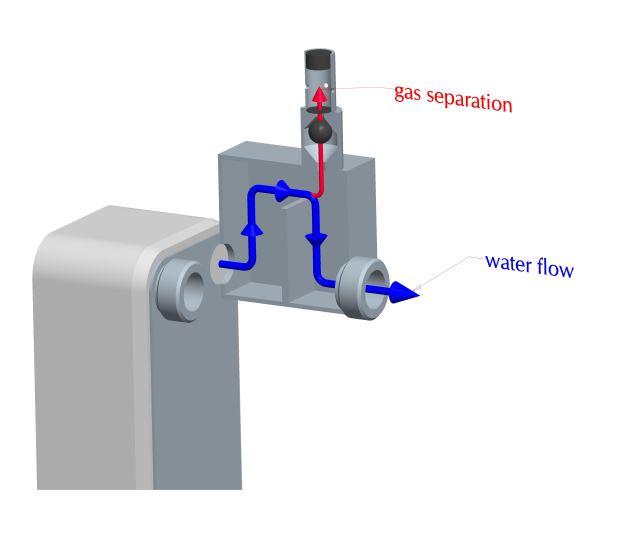New development of a heat exchanger for propane heat pumps with propane condenser for outdoor installation.
Why is propane used as a refrigerant at all? What effect does R290 have on the climate?
As propane does not contribute to the greenhouse effect and results in higher coefficients of performance, propane is increasingly being used in heat pumps despite special safety requirements. Propane C3H8 is a hydrocarbon and is also known as R290 in refrigeration technology. Propane liquefies under pressure, is colorless and almost odorless and has neither an ozone depletion potential nor a significant direct greenhouse effect. Thanks to its excellent thermodynamic properties, propane is a particularly energy-saving refrigerant.
However, in order to minimize safety risks when using propane in the heating circuit, the amount of refrigerant must be kept as low as possible.
Problem: Flammable and explosive refrigerants may only enter residential buildings in small quantities. To meet this requirement, propane heat pumps are often installed outside the residential unit. Only the hot water is fed into the house. In the past, soldered double-wall heat exchangers were used. However, these are not a technically clean solution because, on the one hand, the heat transfer capacity and the service life of this device are rapidly reduced and, on the other hand, it cannot be ensured that no propane enters the water circuit. This safety feature cannot be tested either.
Solution: In order to prevent propane from entering the water circuit of the house in the event of a panel breakthrough and from entering the living unit via vent valves, our safety heat exchanger vents the propane from the water circuit immediately downstream of the heat exchanger and discharges it into the environment.
The vent is dimensioned in such a way that it is safely degassed even with a large amount of propane. It is also possible to install a propane sensor and switch it to the heat pump control system and trigger an alarm. The effect of the safety device can be tested.


The illustration shows a safety heat exchanger from the 43 series. A vent valve, which in this case is positioned on the connection side, discharges the propane from the heat circuit directly to the outside in the event of media spillage.
